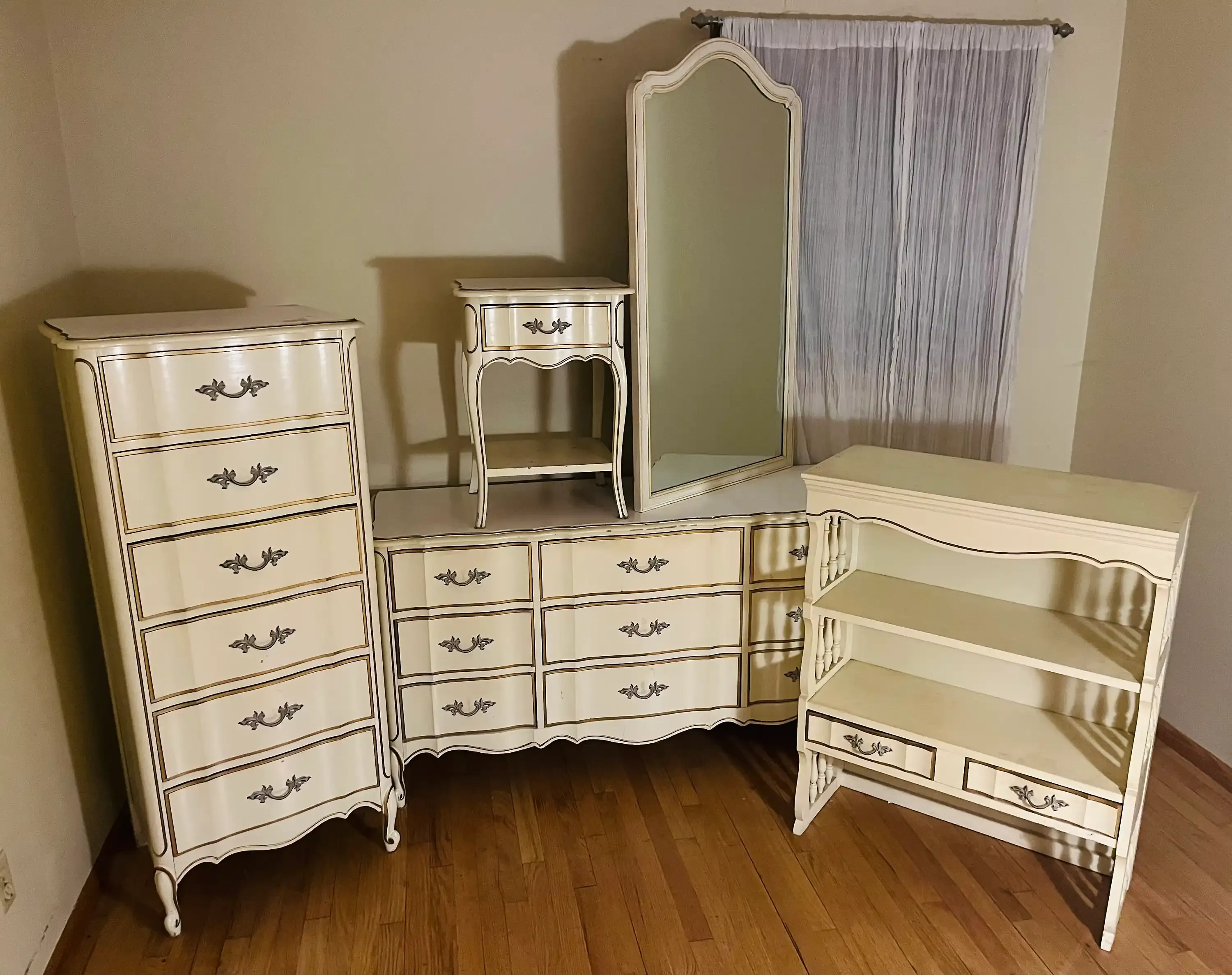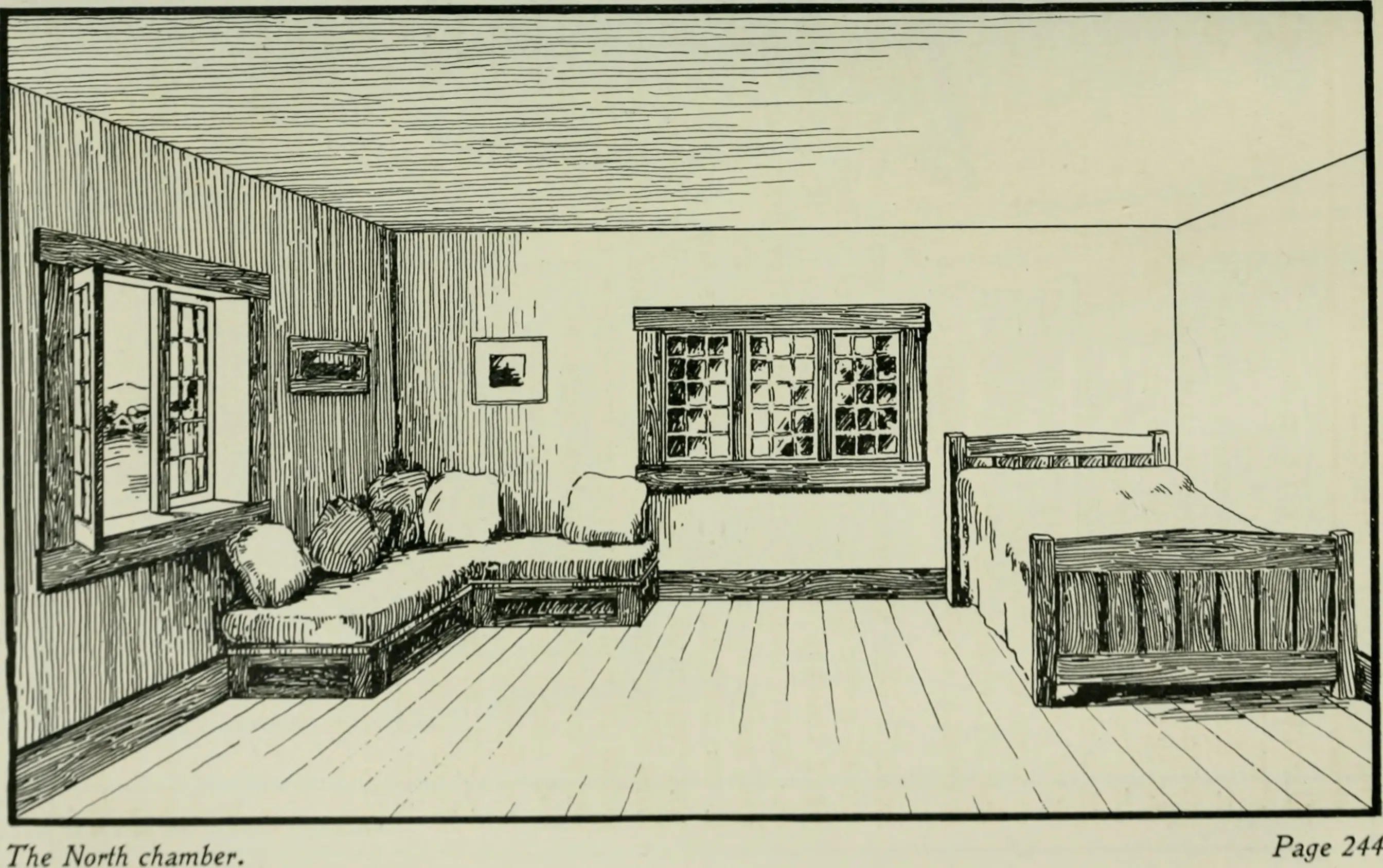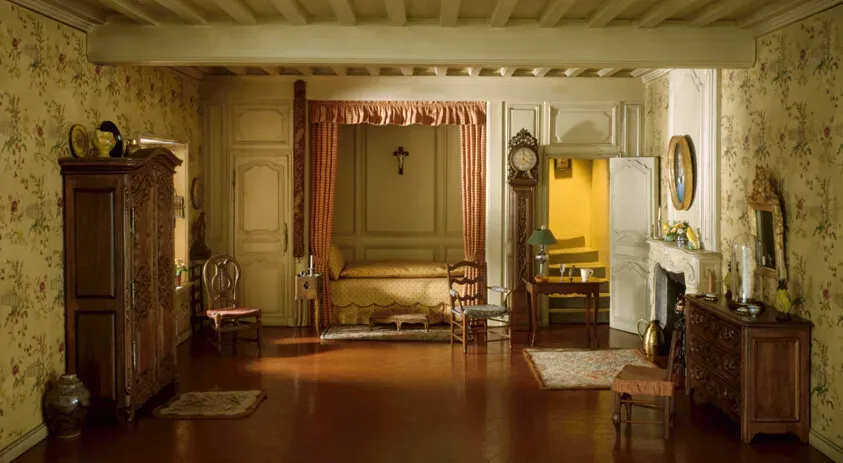Table of Contents
Ever walked into a room and felt instantly transported to a sun-drenched farmhouse in the French countryside? There’s a certain charm, a relaxed elegance, that just feels right. That’s often the magic of French Provincial style. It’s not about fussy formality; it’s about comfort, history, and a touch of rustic sophistication. If you’re dreaming of creating a bedroom that feels both inviting and effortlessly chic, diving into the world of french provincial bedroom furniture is a good place to start. It brings warmth, character, and a sense of enduring style that machine-made pieces just can't replicate.
What Defines French Provincial Bedroom Furniture?
What Defines French Provincial Bedroom Furniture?
Rooted in the French Countryside
So, you're curious about what makes French Provincial bedroom furniture tick? Forget the gilded excess of Versailles. This style comes from the provincial areas of France – the countryside, the smaller towns, where people wanted beautiful things but needed them to be practical and comfortable for everyday life. Think of wealthy landowners or successful merchants who admired the fancy furniture in Paris but adapted it for their own less formal, though still elegant, homes.
It’s a blend of sophistication and simplicity. They took the elaborate designs from the city, like curves and carvings, but simplified them. The materials were often local woods, and the finishes were less flashy. It wasn't about showing off immense wealth; it was about creating a comfortable, beautiful living space that felt lived-in and loved. That lived-in feel is crucial to understanding this style.
Hallmarks of the Provincial Look
What really defines french provincial bedroom furniture? Look for the curves. Cabriole legs are a dead giveaway – those elegant, S-shaped legs you see on chests, tables, and chairs. You'll also notice gentle curves on headboards and footboards, often with a slight "camelback" shape or subtle scrolls. Carvings are present, but they're usually softer and less intricate than their formal Parisian cousins.
Think of motifs like shells, leaves, or simple floral patterns, often carved directly into the wood or applied as ornamentation. The finishes are typically lighter than dark, formal woods. Distressed paint finishes, often in whites, creams, or soft pastels, are common, giving pieces that lovely aged look. Natural wood finishes, like oak or walnut, are also used but tend to be lighter or given a matte, rather than high-gloss, treatment. Hardware is usually simple, like brass or iron pulls, sometimes with a bit of decorative flair but nothing overly ornate.
- Cabriole legs with subtle curves.
- Simplified carvings (shells, leaves, florals).
- Curved headboards and footboards.
- Distressed or lighter paint finishes (whites, creams, pastels).
- Natural wood finishes (oak, walnut) with matte surfaces.
- Simple metal hardware (brass, iron).
Balancing Elegance and Comfort
The genius of French Provincial bedroom furniture lies in its ability to feel both refined and completely approachable. It has that touch of old-world elegance without being stuffy or untouchable. A French Provincial dresser, with its curved front and aged patina, looks substantial and well-made, but the soft finish invites you to touch it. A bed frame with a gently curved headboard feels romantic, but the overall structure is sturdy and welcoming, not delicate and fragile.
It’s furniture meant for relaxation and everyday use, not just for show. This style perfectly captures a certain lifestyle – one that values beauty and craftsmanship but prioritizes comfort and a relaxed atmosphere. It’s elegant, yes, but it’s an elegance that doesn’t demand you stand on ceremony. It’s the kind of furniture that looks even better with a few books piled on the nightstand or a cozy throw casually draped over the footboard.
Key Design Elements of French Provincial Bedroom Furniture
Key Design Elements of French Provincial Bedroom Furniture
Those Signature Curves and Carvings
Alright, let's get down to the nitty-gritty of what makes french provincial bedroom furniture instantly recognizable. It's all about the shape, the flow. Forget straight lines and sharp angles. We're talking curves, and lots of 'em. The most famous is the cabriole leg – that elegant, double-curved leg that swells outwards at the top and tapers down to a delicate foot, often a scroll or pad foot. You see these on everything: dressers, nightstands, benches, even some bed frames. It gives pieces a feeling of lightness and movement, even if they're solid wood.
Beyond the legs, look for curved edges on tabletops and drawer fronts, and those lovely shaped headboards and footboards we mentioned. The carvings aren't the deep, dramatic kind you find on formal Baroque pieces. They're softer, shallower, often depicting natural motifs like acanthus leaves, shells (especially the scallop shell, or "coquille"), or simple floral garlands. Sometimes you'll see a carved cartouche, which is like a decorative oval or shield shape, often left plain or with a simple flourish inside. These details add visual interest and a touch of handcrafted charm without being overpowering.
Finishes and Materials that Tell a Story
The finish is just as important as the form in french provincial bedroom furniture. You rarely see highly polished, dark woods. Instead, think lighter, softer looks. Painted finishes are incredibly popular, especially in shades of white, cream, ivory, or pale pastels like duck egg blue or soft gray. These aren't usually solid, perfect coats of paint. Often, the paint is distressed or antiqued, meaning it's deliberately worn away in places to reveal the wood beneath, or given a subtle glaze to make it look older and more loved. This isn't accidental; it's part of the design, adding character and that coveted aged patina.
Natural wood finishes are also common, but again, they tend to be lighter woods like oak, cherry, or walnut, often with a matte or waxed finish rather than a glossy varnish. The idea is to let the natural beauty of the wood show through, embracing any imperfections as part of the piece's history. Hardware is typically simple, functional metal – brass or iron pulls, sometimes with a bail handle or a simple knob. They complement the understated elegance of the furniture without competing for attention.
Design Element | Typical Characteristics |
|---|---|
Legs | Cabriole (S-shaped curve), often with scroll or pad feet. |
Carvings | Shallow, natural motifs (leaves, shells, florals, cartouches). |
Finishes | Distressed paint (whites, creams, pastels) or matte natural wood. |
Hardware | Simple brass or iron pulls and knobs. |
Incorporating French Provincial Bedroom Furniture into Your Space
Incorporating French Provincial Bedroom Furniture into Your Space
Mixing Old and New with Provincial Charm
So, you've fallen for the curves and the aged finishes of french provincial bedroom furniture, but maybe you don't want your room to look like a period film set. Good. That's the beauty of this style – it plays well with others. You don't need to go all-in with every single piece being strictly Provincial. Think of it as adding character, not replicating a museum wing. A beautiful French Provincial dresser can sit quite happily next to a modern upholstered bed. A pair of distressed nightstands can ground a room with cleaner lines. The key is balance.
Don't be afraid to mix textures and materials. The warmth of aged wood or painted provincial pieces provides a lovely contrast to sleeker metal or glass elements. A room can feel more layered and interesting when you combine different eras and styles intentionally. It keeps the space from feeling too rigid or themed. It's about creating a curated look that reflects your personal taste, not just copying a catalog page. Seriously, who lives like that?
Choosing Key Pieces for Impact
If you're just starting out, or if your budget doesn't allow for a complete overhaul, focus on one or two significant pieces of french provincial bedroom furniture that can make a real statement. A bed frame is an obvious choice, setting the tone for the entire room with its curves and finish. A substantial dresser or armoire can also anchor the space and provide much-needed storage while showcasing the style's craftsmanship. Even smaller items, like a provincial-style bench at the foot of the bed or a single, elegant nightstand, can infuse the room with that sought-after charm.
Consider the scale of the furniture relative to your room. Those gorgeous, large armoires look amazing, but they can overwhelm a small space. Conversely, tiny pieces can get lost in a large room. Measure your space and the potential furniture carefully. Think about how the piece functions in the room – is it primarily decorative, or does it need to work hard for storage? Choosing wisely ensures your provincial piece feels like a natural, welcome addition, not just an awkward antique shoehorned in.
Making Your Provincial Piece Pop:
- Pair a Provincial dresser with a modern mirror above it.
- Use a single Provincial nightstand next to a contemporary bed.
- Place a Provincial bench at the end of a non-Provincial bed.
- Mix in textiles like linen or velvet to complement the furniture's texture.
Sourcing and Caring for French Provincial Bedroom Furniture
Sourcing and Caring for French Provincial Bedroom Furniture
Sourcing and Caring for French Provincial Bedroom Furniture
Hunting for just the right pieces of french provincial bedroom furniture can feel like a bit of a quest, honestly. You might picture yourself wandering through charming antique shops, hoping to stumble upon a hidden gem with a perfect patina. That happens sometimes, sure, but often it involves scrolling endlessly online, checking out estate sales where you have to wrestle with other eager buyers, or finding a reputable dealer who specializes in European antiques. Reproductions exist, of course, and some are quite good, offering the look without the history (or the potential woodworm). Each avenue has its merits and headaches – the thrill of finding a truly old piece is unmatched, but sometimes a well-made new one is just less hassle. Once you've finally acquired your coveted dresser or bed frame, keeping it looking good requires a gentle touch. Those lovely distressed finishes are charming, but they aren't indestructible. Harsh cleaners are a definite no-go. Stick to dusting with a soft, dry cloth most of the time. For wood surfaces, a light application of good quality furniture wax occasionally can nourish the wood and enhance the finish without building up residue. Think of it less as heavy-duty cleaning and more like preservation.
Where to Start Your Search:
- Local antique shops and malls (prepare for dusty corners).
- Estate sales (timing and luck are everything).
- Online marketplaces and auctions (buyer beware, inspect carefully).
- Specialized antique dealers focusing on European furniture.
- Retailers offering high-quality French Provincial reproductions.
Your Provincial Retreat Awaits
Bringing french provincial bedroom furniture into your home isn't just about acquiring pieces; it's about curating a feeling. It's the gentle curve of a headboard, the subtle distressing on a dresser, the way a piece feels like it has a story to tell. While finding authentic or even quality re-edition pieces takes some looking, and integrating them requires thoughtful consideration of scale and existing decor, the result is a bedroom that feels genuinely lived-in and deeply personal. It’s a style that sidesteps fleeting trends, offering instead a quiet, enduring elegance that makes coming home feel a little more special.
